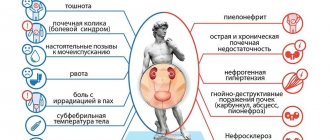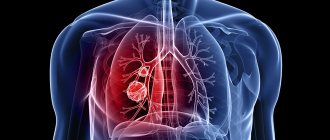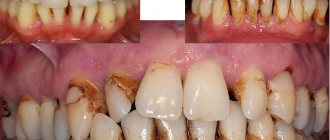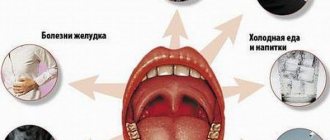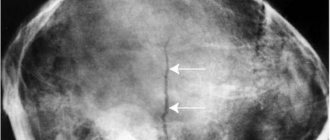Inflammation of the middle ear is a fairly common phenomenon in the practice of ENT specialists, which is called catarrhal otitis media. The form of the disease occurs both acute and chronic, and in the process of inflammation, all cavities and structures of the middle ear are affected. Due to the immaturity of the auditory tube, children are more often susceptible to pathology, but adults also suffer from this disease. During the course of the disease, the Eustachian tube becomes blocked, and fluid mixed with pus enters the ear cavity (depending on the stage of inflammation).
Factors causing the disease
Acute catarrhal otitis media among diseases of the international classification has an IBC code of 10 H65. Over many years of treatment, otolaryngologists have identified a large number of reasons for the development of pathology. In adults, the disease is provoked by:
- infections localized in the oral cavity;
- chronic infectious diseases;
- diseases due to viruses entering the body;
- diagnosing diabetes mellitus;
- deficiency of vitamins in the body;
- development of rickets;
- pathological processes in the kidney area;
- improper intense nose blowing;
- allergic manifestations in the form of sneezing;
- low level of protective immune system.
At the first manifestations of pathologies of the auditory organs, a pregnant woman should rush to be examined by an otolaryngologist. An advanced disease, self-medication, and illiterate therapy can be the consequences of hearing problems in a baby after birth.
Acute otitis media appears in a child for the following reasons:
- abnormal development of the temporal bone;
- whole embryonic tissue of the ear, which, if functioning properly, should rupture and resolve on its own until the child is 1-1.5 years old;
- inflammatory process of the tonsils of the palate;
- incorrect position of the baby when eating in the first 9 months of life;
- Eustachian tube abnormality.
Unilateral or bilateral catarrhal otitis should be treated by a qualified specialist in a narrow field. It is prohibited to use advice from people without proper education and experience in this field in therapy. Children under 2 years of age are recommended to carry out therapeutic measures using alternative medicine with extreme caution so as not to provoke complications or cause allergic reactions after using healing drops, decoctions, and tinctures.
Treatment in children
Therapy for young patients is carried out in a hospital setting. This is necessary to prevent the development of secondary complications of catarrhal inflammation of the middle ear. The duration of hospitalization varies and depends on the severity of symptoms. Severe cases are treated in the intensive care unit. The main goal of doctors is to stop inflammation in the ear cavity. As a rule, to eliminate unfavorable symptoms, children are prescribed a set of medications and physiological procedures (phonoresis, ultrasound, UHF therapy).
For bacterial infections, broad-spectrum antibiotics (Amoxiclav, Sumamed) are prescribed. The chronic form of the disease occurs against the background of reduced immunity, so doctors prescribe interferon drugs (Tilaxin, Arbidol) and multivitamin complexes (Pikovit, Vitrum) to children. To eliminate pain, ear drops are prescribed:
- Otizol. It is a combined agent with analgesic, vasoconstrictor, and anti-inflammatory effects. Children from 6 months of age are prescribed 1 drop 3 times a day for 3-10 days. Do not use drops if the eardrum is perforated or if there is hypersensitivity to the components.
- Tsipromed. A potent agent with a pronounced antibacterial effect. Children's dosage – 2 drops 2-3 times/day. The duration of treatment is 7-10 days. Contraindication for use is the presence of allergic reactions to the components of the drug.
If relief from drug treatment does not occur, then otolaryngologists may prescribe middle ear surgery. The nature of the surgical intervention depends on the clinical picture of inflammation. Removal of the adenoids or artificial perforation of the ear membrane with the introduction of a shunt to ensure the outflow of exudate can be performed. Timely surgical intervention will preserve the normal functioning of the child’s hearing organ.
Symptoms of acute otitis media
Signs of acute catarrhal otitis media attack the body quickly, so timely suppression of the first symptoms is very important to eliminate the disease at the initial stage. Doctors have identified common clinical manifestations:
- the patient's ear canals are blocked;
- autophony develops (when a person hears his own voice echoing);
- after a short time, autophony is replaced by noise effects in the ears;
- the tympanic cavity is filled with serous formations;
- pulsating pain attacks appear in the sore ear, which lead to psychological and physical discomfort;
- young patients become whiny and capricious;
- Body temperature in adults rises to 39 degrees, in infants it may be higher;
- fatigue from previously enjoyable work appears;
- loss of appetite, weight loss;
- loud sounds increase the pulsation.
Among ear pathologies, otitis media of the middle ear, increasing symptoms, leads to general intoxication of the body. The serous form develops into a purulent pathology in a short time without treatment.
Specialists more often record acute right-sided, left-sided acute otitis media. A bilateral inflammatory process is diagnosed less frequently, but when it occurs, the symptoms double, hearing acuity decreases, and pain attacks from the ear canals migrate to the head.
Otolaryngologists warn that when the catarrhal form of the disease is complicated, an increase in body temperature may be observed for several days, even after the patient takes antipyretic drugs.
Visually examining the patient, the doctor notices redness of the tympanic cavity. By pressing on the affected area, sharp pain syndromes appear. A laboratory blood test will help confirm inflammation in the hearing organs. A large number of leukocytes signals the development of an inflammatory process.
Causes of acute catarrhal otitis
The development of the disease in most cases is facilitated by a descending infectious process from the nasopharynx, which spreads through the auditory tube. The main trigger for acute catarrhal otitis media in adults and children may be:
- sinusitis,
- adenoid vegetations,
- rhinoviruses,
- tonsillitis,
- influenza and ARVI,
- frontitis,
- bacterial flora (mainly staphylococcal and streptococcal),
- sinusitis,
- infectious diseases (scarlet fever, measles, tuberculosis and others).
Bacteria and viruses are spread by blowing the nose, sneezing, and coughing, but hematogenous infection (through blood) is also possible. This occurs more often with childhood infectious diseases.
The following conditions of the body also contribute to the occurrence and course of otitis:
- hypothermia and prolonged stay in damp rooms,
- avitaminosis,
- liver and kidney diseases,
- diabetes,
- weak immunity,
- severe coughing or sneezing, leading to overexertion and increased blood pressure. This condition pushes infected mucus into all the cavities of the middle ear.
Treatment of catarrhal otitis media
When diagnosing catarrhal otitis in children under 2 years of age, treatment is carried out in a hospital. Therapeutic measures include UHF manipulations, warming compresses, Sellux.
The main task of qualified health workers is to treat symptoms as they increase. The first step is aimed at eliminating the source of inflammation. It is necessary to minimize the swelling of the mucous membranes in a short time and normalize the functioning of the Eustachian tube. For such procedures, nasal vasoconstrictors and anti-inflammatory and analgesic ear drops are used.
When body temperature rises, antipyretic medications are used. Thermal manipulations lead to complications and are therefore strictly prohibited for this symptom.
If the temperature is within the normal range, they practice therapy with compresses, which are placed in the ears for 3-6 hours. Additionally, instillation of the ear canals with Protorgol and Collargol is prescribed. The products have a bactericidal, anti-edematous and anti-inflammatory effect on the affected organ.
In most cases, disease in the left or right ear is treated without the prescription of antibacterial agents. Doctors advise instilling drops of Otinum, Sofrodex, Otipax into the cavity several times during the day to prevent the development of pathology. If there is purulent discharge mixed with blood, you should not drip medications into the ear canals. You need to see your doctor immediately.
Otitis in children is treated with an antibiotic when the temperature rises above 39 degrees. Penicillin or macrolide drugs are effective. The acute form of catarrhal otitis lasts for a month. If the pathology does not go away during this period, it becomes chronic, which is difficult to get rid of.
Physiotherapy
The essence of treatment is based on stabilizing the patient’s condition and eliminating the resulting pathology. This is facilitated by:
- warming up with a blue lamp;
- vibration massage of the tragus;
- Sollux (infrared radiation);
- laser therapy;
- UHF;
- Ural Federal District;
- use of electrophoresis.
This therapy and the number of sessions are regulated by an otolaryngologist. This treatment quite effectively stops the disease, the patient’s condition improves in the shortest possible time. It should be remembered that after the session you need to rest for half an hour. At the same time, it is necessary to minimize going outside, especially during the cold season.
Alternative to drug treatment
Comprehensive treatment will help eliminate ear inflammation effectively and in a short time. Physiotherapeutic measures are practiced together with medications:
- warm the outer ear with a Sollux lamp, a blue lamp;
- do vibration massage of the tragus;
- Electrophoresis is effective;
- carry out manipulations with ultraviolet radiation;
In modern medicine, otolaryngologists use laser therapy. Over many years of healing, ultra-high-frequency manipulations have proven effective.
Physiotherapeutic measures can achieve regression of the disease in a short time. After just a few courses, the patient feels significant improvements, pain subsides, swelling goes away, inflammation is minimized. Experts recommend staying calm for 30-40 minutes after the procedures and not going out into the cold.
Traditional methods of treating the disease were practiced by our ancestors. Since ancient times, for ear inflammation, drops prepared independently have been used, and compresses have been made from decoctions of medicinal plants.
It is impossible to eliminate otitis media using traditional medicine alone, but supporting the body and getting rid of symptoms is quite possible. There are many recipes for drugs, it is important to choose the right components that will suit the hearing organs and will not cause allergic reactions or complications.
Warm compresses are widely used methods to relieve pain and relieve inflammation. They are allowed to be placed on patients at normal body temperature. Classic compress option:
- mix 1:1 alcohol and water;
- heat the solution;
- Soak a cloth bandage or gauze in the liquid, squeeze it out and apply it to the diseased organ for 2 hours;
- Afterwards, the auricle should be lubricated with baby cream or Vaseline.
Apply baked onion to the sore ear. The vegetable promotes the rapid breakthrough of the boil. The same procedure can be carried out with plantain leaves.
First aid for the symptoms of the disease is a decoction of laurel leaves. Several bay leaves are poured with boiling water, boiled over low heat for 2-3 minutes, and cooled. Give the patient a decoction to drink several times a day, 3-4 tablespoons. 3-5 drops of the decoction are injected into the ear canals.
After the boil has broken through, you can perform a steam warming procedure. The techniques are different, the main thing is to do everything carefully so as not to get burned. It is allowed to warm the ear for no longer than 4 minutes, then wipe it with a towel at room temperature, and use a cotton swab to soak up the remaining water in the auricle. During the day, the steam bath is carried out up to ten times.
The universal remedy salt is used to warm the sore ear. Heat the ingredient in a frying pan or in the microwave, place it in a clean sock or fabric bag and localize it to the area near the ear. The manipulation lasts until the salt cools. Do not apply a hot product to the ear itself. Using the same scheme, rice is used.
Garlic is antimicrobial and analgesic during illness. According to the advice of our grandmothers, the vegetable should be taken daily, as a separate product, but within the norm. Additionally, it is recommended to place boiled chopped garlic evenly in gauze and apply it near the ear area.
Apple cider vinegar is responsible for eliminating fungus. You should prepare a healing mixture of vinegar, water and alcohol in a ratio of 1:1:1. Turunda is moistened in the tincture and placed in the hearing organ for 5-10 minutes.
Traditional medicine is recognized by specialists, but it should be carried out only after consultation with an otolaryngologist, so as not to complicate the inflammatory process. You cannot use prepared drops that are stored longer than 24 hours; each product must be freshly prepared. Turundas and cotton swabs should be placed in the auricle carefully so that a foreign body does not get into the ear canals.
Prevention
To prevent catarrhal otitis from affecting your ears, you should follow a number of preventive measures:
- During viral and colds, take measures to relieve swelling of the mucous membranes - rinse your nose with saline solutions, use vasoconstrictor drops, ventilate the room and humidify the air in it.
- Blow your nose correctly so that mucus from your nose does not enter the auditory tube. It is correct to empty the nasal passages one at a time and without making sharp exhalations.
- Strengthen your body's strength and harden yourself to get sick less often.
What is forbidden to do in case of acute otitis media
In order not to provoke complications during the treatment of the disease, it is important to know what manipulations are prohibited. Therapy should be carried out under the strict supervision of the treating doctor. It is better to contact medical institutions at the first manifestations of pathology, which will allow you to overcome the symptoms and the source of the inflammatory process in a short time.
For the treatment of children it is prohibited:
- use alcohol drops for instillation of the ear canals;
- in order to prevent blockage of the ear canals and eliminate the risk of burns, it is advised not to treat babies with wax candles;
- Children of preschool age are not recommended to use alcohol compresses, due to the ease of absorption of alcohol into the skin, which provokes general intoxication of the body.
Adult patients should not be given compresses with a warming effect in case of a purulent form of the disease. If the eardrum is ruptured, it is prohibited to introduce antibacterial agents or drops into the ear canals without the doctor’s permission.
It is important to properly blow your nose so that pathogenic bacteria and infections do not migrate into the Eustachian tube during manipulation. Doctors do not allow you to rinse your nose if there is a large number of purulent formations in it.
Treatment method
Treatment of catarrhal otitis is based on medication. This is the basis of therapy. In case of a complicated course of the disease, there is a need for antibiotic therapy. If we are talking about the initial stage of development of pathology in an adult, then doctors often choose a wait-and-see approach, since in some cases the disease may go away on its own. If the disease is diagnosed in a child under 2 years of age, the wait-and-see approach is not suitable - the child is immediately hospitalized and therapy is carried out under the supervision of a doctor. Adults are subject to hospitalization only if a complicated form of ear disease develops.
How many days the catarrhal form of otitis is treated depends on the complexity of the disease and the specifics of the prescribed therapy.
Catarrhal otitis media is treated in two ways:
- physiotherapy;
- medicinal.
Drug treatment method
The choice of drug treatment for catarrhal otitis depends on the patient’s age, the presence and frequency of previous infections and other factors.
The goal of treating this form of inflammatory process in the ears is to reduce swelling of the mucous membrane of the nasopharynx, auditory canal, and restore natural ventilation in the tympanic cavity of the ear. This can be achieved through the following activities:
- Instillation of the nose with vasoconstrictor drugs, such as Nazivin, Otrivin, Rinazolin, etc.
- Applying compresses with drugs that have an analgesic, anti-inflammatory and warming effect. This also includes the procedure for installing medicinal turundas moistened with a mixture of medical alcohol, glycerin, and resorcinol. They are inserted into the ear canal. The duration of such procedures, as well as the components for them, should be prescribed only by a doctor.
Important! Self-medication is dangerous to health and life. Therefore, you should not prescribe medications and choose the dosage yourself. This is the prerogative of an exclusively qualified specialist.
- Instillation of bactericidal preparations into the ears that can relieve inflammation and reduce swelling of the tissues of the tympanic cavity.
The very first thing that is prescribed for catarrhal otitis to eliminate pain is:
- For internal use. Preparations based on ibuprofen, paracetamol. Dosage according to age category and doctor's prescription. These same medications are used to reduce body temperature.
- For topical use. Instillation of drops into the ear, which contain an anesthetic, lidocaine. It is also worth noting that before the instillation procedure, the drops are heated to temperatures of 36-37°C.
Attention! If there are purulent, bloody and other uncharacteristic discharges from the middle ear, instilling the medicine into the place is prohibited. In this case, only the help of a qualified specialist is the most correct solution. Only a doctor can determine the cause of the development of the pathology and prescribe proper treatment.
If we talk about antibiotic therapy, then the first-line drugs are mainly used - penicillins, and the second line - cephalosporins and macrolides. Such medications are prescribed subject to:
- if the patient is less than 2 years old;
- if the patient is more than 2 years old, subject to high fever - up to 40°C and severe pain.
The effectiveness of antibiotic therapy is observed after 2 days from the start of taking the drugs. If the effect is not observed, especially if the patient’s well-being worsens, then there is a need to revise the treatment tactics.
Attention! In mild cases, the disease is limited to local treatment. Most often, this is only instillation of drugs containing an antibiotic into the ears.
It is also worth saying that the most effective methods of treating acute catarrhal form of otitis include such a procedure as catheterization of the Eustachian tube.
In addition to antibiotic therapy, doctors may also prescribe antihistamines and vasoconstrictor therapy as treatment. In this case, it is extremely important to strictly follow the doctor's instructions.
For reference! Recent clinical studies have shown that, firstly, there is no reliable positive result from the use of antihistamines and vasoconstrictors in children. And secondly, antihistamines can provoke thickening and, thereby, difficulty in resolving the exudate accumulated in the tympanic cavity.
Waiting tactics
What does watchful waiting mean? Due to the fact that the catarrhal form of otitis media most often goes away on its own, and antibiotic therapy negatively affects the body, doctors often prefer a wait-and-see approach. In this case, the patient is under home observation for 1-2 days without any treatment with antibacterial drugs. Waiting tactics are taken as a basis if:
- during the examination of the patient, the doctor does not see a clear picture of the development of the infectious process and, as a result, he cannot determine the etiology of the disease;
- patient age over 24 months;
- there is a fever accompanied by mild pain;
- there are no other symptoms of the disease, with the exception of the ears.
If, after the specified time, pain and body temperature increase, then antibiotic therapy is already prescribed. The weakening of symptoms during the waiting period extends the period of observation of the patient.
Possible complications
Untimely treatment of acute catarrhal otitis often provokes the transition of the disease to a purulent form. When mucous formations stagnate, the infection penetrates into neighboring tissues, adding a number of other diseases:
- The inflammatory process of the mastoid process, which is localized behind the auricle, is called mastoiditis in medicine. When the disease occurs, hearing decreases, acute pain in the temples torments, and the behind-the-ear areas turn red and swell.
- Pus penetrating into the auricle can develop labyrinthitis. Patients experience noise effects in the ears, dizziness, attacks of nausea, and malfunction of the cardiovascular system.
- According to statistics, about 3% of patients suffer from intracranial complications. Meningitis symptoms are pronounced. The body temperature rises to 39 degrees and above, constant headaches are felt, and a person’s consciousness becomes clouded.
- Complications of the pathology may include paresis of the facial nerve. Inflammation of the trigeminal nerve impairs its functioning. Half of the patient's face remains motionless.
The pressure of purulent masses leads to thinning of the eardrum. A person's hearing becomes worse. Cases of complete hearing loss have been recorded in severe forms of otitis media.
Symptoms and course
Pain, feeling of fullness and congestion in the ear, decreased hearing, noise in the ear.
The pain is only sometimes insignificant, but usually strong and gradually increasing, felt in the depths of the ear and radiates to the parietal-temporal or occipital region, sometimes to the teeth. The pain can be throbbing, aching, stabbing, boring, intensifies with increasing pressure in the tympanic cavity (blowing the nose, swallowing, sneezing, coughing) and often deprives a person of sleep, appetite, prevents eating, etc. If otitis media complicates a general infectious disease, then its occurrence is accompanied by a new or even greater increase in temperature. Upon examination, redness of the eardrum is revealed to varying degrees, it is painful when touched with a cotton wick, and in some cases when pressing on the tragus (the symptom is not constant). Reactive inflammatory changes are observed in the blood (leukocytosis, increased ESR). If you experience these symptoms, we recommend making an appointment with your doctor. Timely consultation will prevent negative consequences for your health. Phone number for appointment
Preventive measures
Prevention of acute catarrhal otitis involves timely treatment of colds, acute respiratory viral infections, and runny nose. It is easier to get rid of the disease in its first stages, so an urgent visit to the doctor will simplify the treatment procedure.
To prevent infection from getting into the ear, you need to properly blow your nose out of accumulated exudates. You should open your mouth slightly while blowing your nose.
After water procedures, you need to remove any remaining water from the ears. If relapses are frequent, before going to the sea or river, it is advised to visit an otolaryngologist for professional ear canal cleaning.
Pinning, playing sports, a healthy lifestyle, and proper nutrition will help maintain and strengthen the functionality of the protective immune system. Strong immunity actively fights pathogens.
Treatment
If the catarrhal form of inflammation of the middle ear passes without complications, then the adult or child is prescribed treatment at home, but strict bed rest is prescribed. Antibacterial therapy is indicated if the patient is small (up to 2 years) or the patient has a critical body temperature (Augmentin, Amoxicillin). In other cases, local anesthetic drops (Otinum, Novocaine) and physiotherapy to warm the auricle (UHF, heating pad or alcohol compress on the middle ear area) are prescribed.
Treatment of catarrhal otitis also includes the use of local vasoconstrictors (Naphthyzin, Galazolin). If the eardrum is perforated, antibiotic drops (Tsipromed, Combinil) are prescribed. Home treatment involves the use of anti-inflammatory and painkillers (Paracetamol, Ibuprofen), the use of warm compresses (2-3 times a day). After treating the symptoms, the exudate resolves on its own.
The most commonly prescribed drops for catarrhal inflammation of the middle ear
- Otipax. A drug containing lidocaine, phenazone. Has anti-inflammatory, analgesic effects. Prescribed for pain relief with severe symptoms of otitis media. Dosage: 4 drops 3 times/day for 10 days. Contraindications: hypersensitivity to components, traumatic or infectious damage to the integrity of the eardrum.
- Otofa. The main element is rifamycin, which has an antimicrobial effect. The drug is used for purulent discharge from the auricle and for exacerbation of chronic otitis media. Dosage for adults – 5, and for children – 3 drops 3 times a day for no more than 7 days. The drug is contraindicated if you are allergic to its components.



